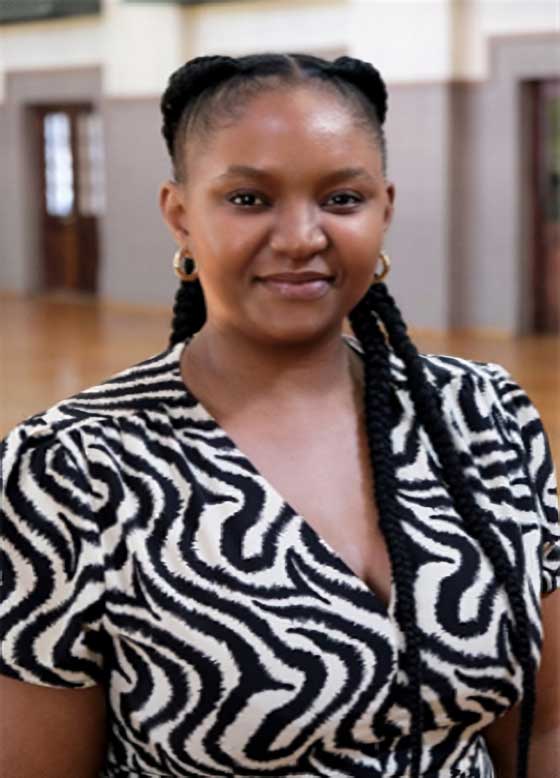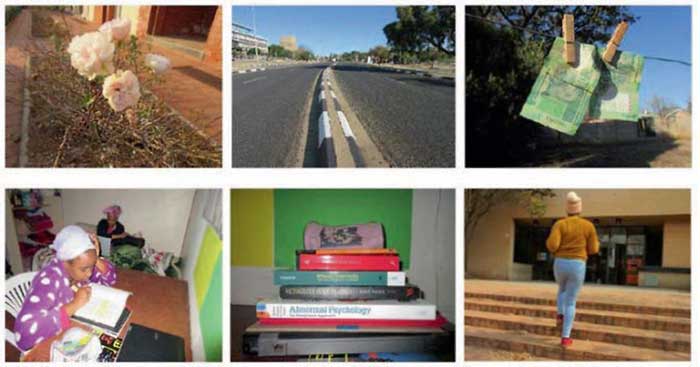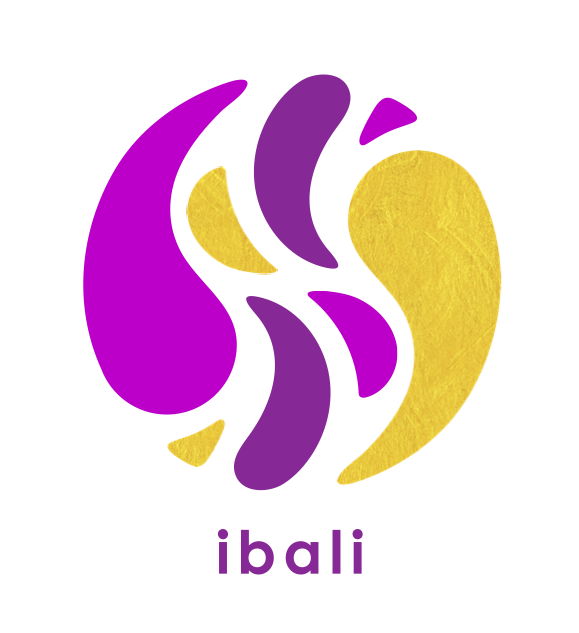You are here
- Home
- Research
- Networks
- Ibali
- Blogs
- Shedding light on educational inclusion and exclusion through storytelling
Shedding light on educational inclusion and exclusion through storytelling
27 July 2023

Portrait photo of Mikateko Mathebula
Ibali’s Faith Mkwananzi and Jennifer Agbaire had the opportunity to engage Mikateko Mathebula about the outstanding work she has been doing. Mikateko is Associate Professor at the Higher Education and Human Development Research Programme, at the University of the Free State, South Africa. Her work examines through a capabilities lens, the relationship between processes of higher education, ‘development’ and human flourishing in the South African context, with a focus on youth from low-income households and/or rural areas. Her overarching intellectual pursuit is to understand how injustices – of the social and epistemic come about and work together, but also how they can be undone through (higher) education. Recently completed projects include a photovoice scoping study on pursuing higher education in contexts of socio-spatial exclusion, working with youth from an upgraded informal settlement in the Free State; and a study with student activists where digital storytelling and participatory video were used to capture students’ aspirations for universities as sustainable communities. Her current project investigates the contribution that universities make to the transformation of rural communities, by exploring, describing, and documenting through narratives, the post university life trajectories of youth from rural areas in the Eastern Cape and Limpopo provinces. Her latest book, Low-income students, human development and higher education in South Africa: Opportunities, obstacles and outcomes co-authored by Melanie Walker, Monica McLean and Patience Mukwambo, is based on the longitudinal Miratho project which examined the factors and dynamics that influence higher education access, participation and outcomes for low-income youth from rural areas and townships in South Africa. Chapter 8 of the book highlights the higher education stories that can be constructed from life history interviews with university students.
You have been doing interesting storytelling work, Mikateko. Please tell us about this in general.
My work explores what we can learn from the life stories of black youth, especially those from low-income and/or rural areas who are trying to access or have gained access to university in South Africa. I also explore what youth can learn from the process of constructing and telling stories about their lives, and what researchers can learn from facilitating the construction and retelling of these stories. In different ways, the projects I have worked on in the past few years ask how young people’s lives change because of their access to university, but also how the communities from which they come are in turn affected, and what universities can do to ensure more equitable outcomes.
My storytelling work is quite eclectic, but in general I facilitate the construction of stories using different activities during workshops (e.g., river of life drawings, group discussions, viewing documentaries, etc.) that encourage research participants to tell their stories visually and through spoken or written text. Essentially, I then try to retell people’s stories, in ways that a) reflect their own understanding and interpretation of their life experiences; b) speak to broader societal factors and dynamics that have a bearing on how individual lives unfold; and c) improve our understanding of a particular phenomenon or context.
In my current project, I am working with university graduates of rural origin, and facilitate workshops aimed at developing more traditional autobiographical type narratives I am planning to incorporate the narratives into a short documentary film about how universities are transforming rural communities in South Africa. I have recently completed a project with youth from informal settlements who used photo stories to share their educational journeys; and another project with student activists who used digital stories and participatory video to stimulate ideas around rebuilding universities as sustainable communities. This means I use storytelling in very broad terms and apply it as a research method, but also often present research findings in narrative form.
.jpg)
A group of participants to the Photovoice workshop writing on a poster during a storytelling exercise
For example, in the Miratho project, we worked with university students from low-income households located in rural areas and townships in South Africa, to investigate the factors and dynamics that influence patterns of university access, participation, and success for this constituency of youth. Storytelling was through photovoice, where students created individual photo stories and a collective story about their experiences of inclusion and exclusion at university. Over the five-year project period, we did individual oral life histories, as a storytelling technique, with the youths each year. The objective of these life histories was to capture each of the youths’ biographies told in their own words.
Your storytelling work is indeed eclectic. Might this be connected to your interest in stories more generally?
Yes, I have always been drawn to stories in general. I enjoyed listening to bedtime stories as a child, and one of my favourite past times growing up was reading novels. I am also captivated by stories told through film, music and other art forms. I am fascinated by the stories we tell each other in everyday settings. I am intrigued by the different stories we tell ourselves which we sometimes weave into grand narratives about who we are, or what we’re about, or why we exist. Also, I am often moved by stories told in research settings. I think stories are embedded into the way we think, reflect on, and explain things as human beings, which is why I believe telling stories is an integral part of who we are as humans. At their best, stories don’t just entertain, or broaden our imagination and inspire us; they help us to tap into our humanity.

Group drawing of the river of life
The focus of your work is clearly on educational inclusion. How would you say your projects, through storytelling contribute to discourses on inclusion?
Many young people in South Africa do not have opportunities to access good quality schooling. This in turn can hinder access to higher education or limit the range of options for the kind of work they can do, or the kind of lives they can live. Knowing that so many young people are socially, economically, and epistemically excluded by structural inequalities that can be undone (in part) through education is one of the reasons why my research addresses educational inclusion.

Group discussion after presentation of individual photo stories.
I often interpret and therefore retell stories through the lens of the capability approach, which is a normative framework for human development first established by Amartya Sen. The capability approach tells us that what matters when assessing the impact of any process that has a bearing on human lives are individuals’ freedoms, their well-being, what they have reason to value, and whether they can exercise agency to achieve their aspirations. Although the focus is on what individuals can do to achieve wellbeing, the approach also brings our attention to societal structures, to consider how they impact our ability to convert freedoms into valued outcomes. Asking questions about the role of structural inequalities in shaping access, participation and outcomes of university education for low-income youth in South Africa contributes to discussions on inclusion. Using research methods that foreground their stories and acknowledge their contribution to the knowledge is another dimension of inclusion.
What do you hope to achieve through your work on the Miratho project?
I hope the narratives presented in the book resonate with the research participants, and that our overall interpretation of the students’ life histories and university experiences is nuanced enough to capture the complexities of the relationship between universities and human development in South Africa, against a backdrop of staggering inequalities.

Photo story 'My journey of thorns and roses' by Andiswa Sesoana.
Are there other areas you wish to explore using storytelling in future?
I would like to explore the use of diary methods in conjunction with documentary film making. I am also curious about vlogging, as I follow a few South African student vloggers on YouTube, and I am interested in the kind of stories being constructed through their vlogs. I have been thinking about how individual and collective processes of storytelling shape the kind of stories that students are able to tell and share about themselves, and how this requires negotiating one’s narrative identity. I would also like to explore further the concept of narrative capabilities, and how these can be widened (or narrowed) through participatory research.
Please leave a note for early career researchers/Ph.D. students planning on using storytelling in their projects.
I would encourage anyone planning on using storytelling in their projects to reach out to scholars who’ve worked with storytelling methods, read widely, and be imaginative in their implementation of research.
We are happy to have your contribution, Mikateko. Thank you!
.jpg)
